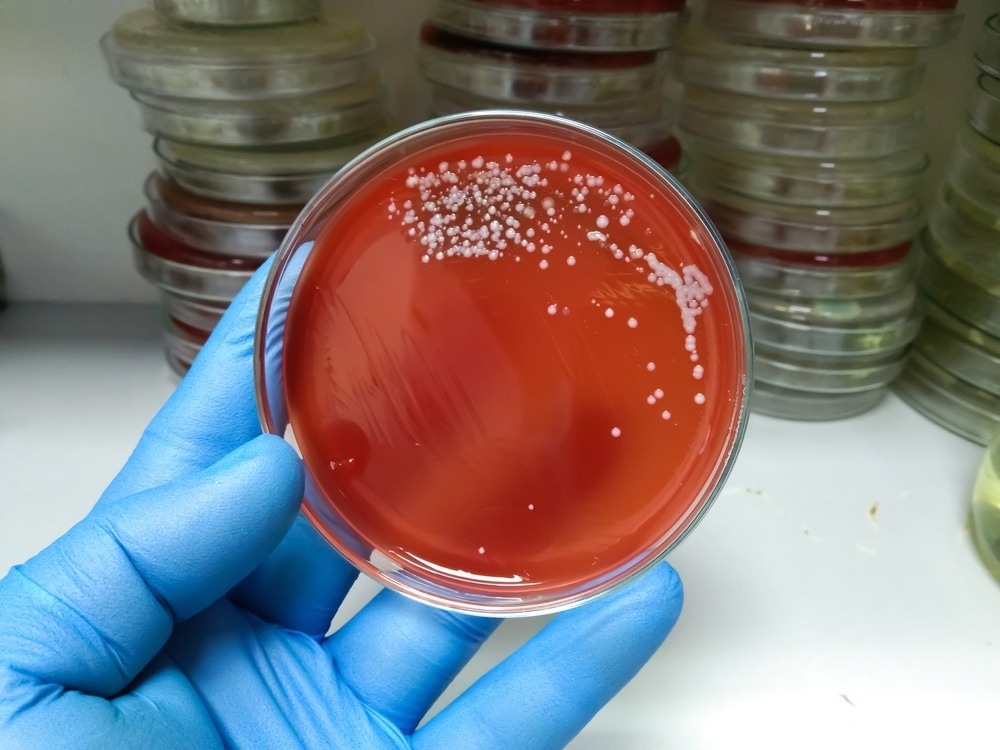A recent study published in the Emerging Infectious Diseases Journal explores the emerging invasive group A Streptococcus M1uk lineage and highlights the importance of its detection.

Study: Emerging Invasive Group A Streptococcus M1UK Lineage Detected by Allele-Specific PCR, England, 2020. Image Credit: Arifbiswas/Shutterstock.com
Background
An increase in group A Streptococcus (GAS) infections has been observed in England, which marks the need to investigate the association between circulating S. pyogenes and cases of invasive disease.
S. pyogenes is the causal agent of scarlet fever and pharyngitis. Since emm1 S. pyogenes strains are extremely virulent and disproportionately linked to invasive infections, an increase in pharyngitis or scarlet fever infection is a public health concern.
Introduction
In England, scarlet fever and invasive S. pyogenes infections have risen in the last eight years. However, this rise subsided during the coronavirus disease 2019 (COVID-19) pandemic. Notably, between 2015 and 2016, a significant increase in invasive infections was observed, which had never occurred previously.
Many factors that can increase susceptibility to S. pyogenes infection have been identified, such as strain-specific virulence, underlying conditions, genetic susceptibility, exposure history, and viral co-infection.
The emergence of M1UK, a new sublineage of emm1 S. pyogenes, was responsible for both scarlet fever and invasive infections in England.
Needless to say, this new strain outcompeted the previous emm1 M1global strain, which emerged and spread globally in the 1980s.
One of the reasons for this out competition is that M1UK strains produce an elevated concentration of superantigenic scarlet fever toxin SpeA (streptococcal pyrogenic exotoxin A).
Additional phage encoding superantigen genes, i.e., ssa and spec, were found along with a single-nucleotide polymorphism (SNP). These factors are responsible for SpeA upregulation in the M1UK lineage.
M1UK has been found in the UK and many European countries, such as Denmark and the Netherlands. The lineage has also been detected in Canada, North America, and Australia.
According to the Active Bacterial Core surveillance system, the US has a low frequency of severe infection due to emm1 isolates infection. The global increase in GAS infections was observed after removing the COVID-19 restrictions, which emphasizes the importance of increased global surveillance for lineages such as M1UK.
About the study
Although genetic differences between M1UK and M1global strains have been identified using whole-genome sequencing techniques, most countries cannot perform sequencing technology.
The current study designed an allele-specific PCR (AS-PCR) method to identify M1UK-specific SNPs in the rofA, gldA, and pstB genes.
Amplification targets were selected to separate M1UK and M1global strains and identify these strains from less common intermediate sublineages. PCR conditions were optimized for amplicons based on the DNA from control strains of each lineage.
Samples were collected from infection bioresource at Imperial College. Allele-specific PCR was performed to assess whether the rofA and pstB primers could identify lineages of 27 newly genome-sequenced noninvasive emm1 S. pyogenes strains isolated between 2017 and 2018.
The isolates for M1global strains were artificially enriched to ascertain the presence of adequate numbers of each lineage, i.e., out of the 27 isolates, eight were M1global, and 19 were M1UK.
To understand whether AS-PCR could identify emm1 isolates from M1global, M1UK, and intermediate sublineages, sixteen strains including M1global, M113snps, M123snps, and M1UK lineages, were obtained between 2013 and 2016.
Importantly, SNPs were accurately detected in the rofA gene from all study isolates. However, in gldA genes, SNPs were only detected in M123snps and M1UK isolates but not M1global or M113snps isolates.
SNPs in pstB were only detected in M1UK isolates. These findings revealed that AS-PCR was able to determine SNP profiles consistently.
In England, a reduction in common respiratory infections, including emm1 S. pyogenes infection occurred in 2020. This decrease in infection could be due to the implementation of nationwide restrictions to contain the COVID-19 pandemic.
A total of 305 invasive emm1 S. pyogenes isolates from 2020 were subjected to AS-PCR. In 91% of the isolates, M1UK-specific SNPs in rofA, gldA, and pstB were observed.
In the remaining isolates, no SNPs were found, and these were designated to M1global. Interestingly, no intermediate lineage emm1 strains were identified by AS-PCR.
Conclusions
The findings of the AS-PCR technique indicated a continued expansion of the M1UK lineage among invasive S. pyogenes between 2016 and the end of 2020 in England.
AS-PCR has proved to be an effective screening technique for detecting the presence of the M1UK sublineages. In the future, this assay must be validated in laboratory settings.
In the 2022–23 season, more than 50% of children with invasive infections in England have been infected with emm1 S. pyogenes. This finding indicates that M1UK lineage has remained dominant in England, and continual surveillance is required.

 PARENTING TIPS
PARENTING TIPS







 PREGNANCY
PREGNANCY








 BABY CARE
BABY CARE








 TODDLERS
TODDLERS








 TEENS
TEENS








 HEALTH CARE
HEALTH CARE






 ACTIVITIES & CRAFTS
ACTIVITIES & CRAFTS








 CONTACT
CONTACT ABOUT
ABOUT


